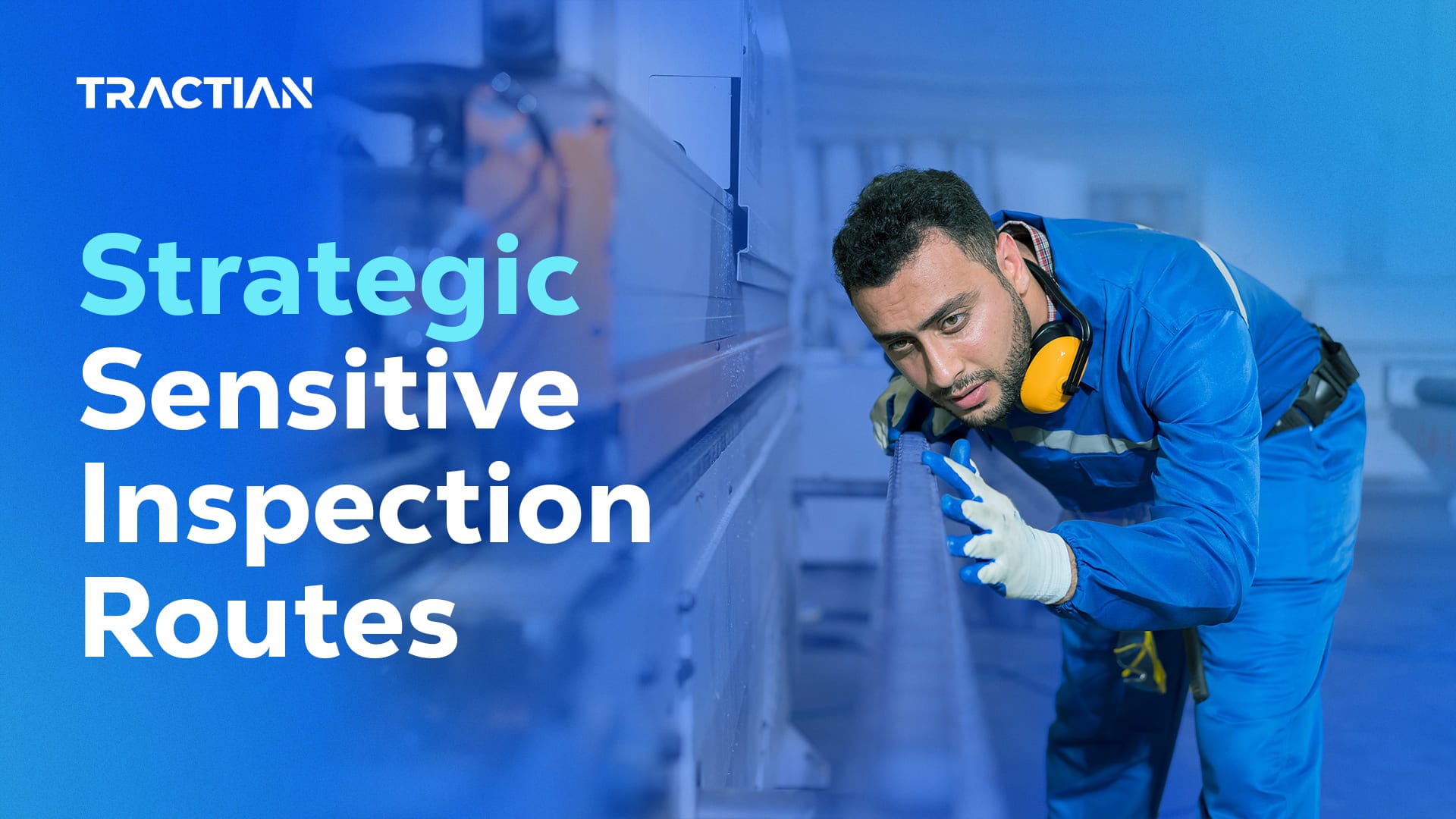One of the most widely used maintenance techniques, sensitive inspection routes consist of using the human senses to assess equipment and component condition.
Sensitive inspection relies fully on the inspector’s expertise, and through it, it’s possible to identify a series of faults and serious problems in machines and processes.

By hearing, it’s possible to identify irregular noises such as knocking, rattling, and dragging sounds, indicating overloads, loose parts, and excessive vibration, among other faults.
Smell is used to recognize odors, like burning electro-electronic components or contamination in lubricating oils.
By touch, high temperature and excessive vibration can be perceived – although it’s not recommended to touch machine surfaces due to risk of injury.
Sight is the most used of all senses. Using vision allows you to identify many issues, including leaks, foaming, darkened oil, dirt build up, corrosion points, and loose screws.
The inspector can perform an equipment condition analysis and collect valuable information that’ll be used to plan new interventions in corrective maintenance, preventive maintenance, and scheduled corrective maintenance.
Read this blog to learn about the different types of maintenance.
Understanding Inspection Routes
Inspections are planned periodically and organized systematically in order to evaluate equipment on strategic routes.

The routes go beyond the individual analysis of each piece of equipment. They encompass a broad view of the production process, and consider the role of every component in this context.
For example, in a milling area we have the material to be milled, the receiving hopper, a conveyor belt, and a hammer mill, among other components. The goal is to inspect all equipment along this flow, from start to finish.

It’s essential to understand the role of each piece of equipment within this process, because an irregularity in condition at the beginning of the flow can lead to failures in later stages.
This means mastering the process flow – identifying each step and the equipment responsible for each function – to identify the root cause of the process irregularity.
For example, the speed of the conveyor belt can affect the amount of material fed to the mill, which can lead to vibration problems and housing damage.
So, by taking a broad view of the process, you can identify root causes like improper belt adjustment, which causes excessive vibration in the mill’s drive motor and consequently shortens bearing life.
Learn the difference between maintenance and repair of an industrial asset
Tools Used in Sensitive Inspection Routes
In sensitive inspections there’s no need to use complex tools to help evaluate the equipment. However, there are some devices that can be used to improve and quantify the analysis, such as:
- Pachymeter: Used to measure component wear, such as plates and rollers. Based on the measurements, you can predict the appropriate time for the replacement of worn parts.
- Thermometer: Ideal for measuring the temperature in bearings, bearing housings, and reducers. The use of the thermometer enables the identification of abnormal temperature variations, indicating possible lubrication or overheating problems.
- Flashlight: Essential for the proper viewing of equipment, especially in low-light areas. The flashlight allows visual identification of problems such as leaks and cracks.
- Gauges: They allow you to measure the thickness of pipe walls, equipment hulls, and other components, identifying possible wear, corrosion, or erosion that could compromise structural integrity.
Overall, the choice of tool will depend on the specific characteristics of each piece of equipment and the nature of the industry sector.
Implementing Sensitive Inspection Routes
Inspection routes need to be structured in order to identify failures on a regular basis and bring reliability to industrial and manufacturing processes.
Thus, the best way to structure optimized inspection routes is with a management system developed specifically for maintenance and manufacturing facilities. These systems use the data you input to generate a robust history of inspection analyses and to build relevant reports.
Below are some steps for implementing inspection routes in the TRACTIAN maintenance management system, TracOS™.
1. Identify the Equipment Involved
List all relevant equipment within the production process, such as silos, belts, sieves, mills, reducers, motors, and bearings, among others.
A well-assembled asset tree with the correct hierarchy order of equipment will allow you to identify them quickly and facilitate optimized routes.

2. Define the Frequency of Inspections
Determine inspection intervals, taking into account the nature of the equipment and the specific needs of the application.

Inspections can be performed at different frequencies (daily, weekly, monthly, annually) depending on the process.
The routes must be planned according to the operational state of the machines, as the equipment can be analyzed in operation or during downtime, depending on the conditions and the components to be analyzed.
3. Create a Checklist for Each Piece of Equipment
For each piece of equipment, develop a list of items to be checked during the inspection. This list can include mechanical, electrical, pneumatic, wear, performance, safety, and other aspects.

4. Record and Analyze the Results
In addition to checklists, record as much information as possible; this can include information like measurements of important parameters and pictures of the equipment.
This data will serve as a history of machine operation, and provide a basis for comparison when anomalies are identified.

Analyzing this information helps us identify behavior patterns, as well as the root cause of irregular conditions.
5. Set up a Maintenance Plan
Based on the analysis, create a strategic maintenance plan for each piece of equipment.
This plan should include the preventive activities to be performed, the frequency, items, tools, and those responsible for their execution.

Good planning offers benefits like more equipment information, increased equipment reliability, and predictability of the use of maintenance resources.
6. Track the Effectiveness of Inspection Routes
You must regularly monitor equipment KPIs and evaluate the effectiveness of inspection routes.

Be sure to make adjustments and improvements according to team feedback and monitor the execution of planned activities to identify possible points of improvement.
When carried out effectively, inspection routes offer numerous advantages for maintenance teams. They enable the detection of abnormalities at minimal implementation expenses, provide great adaptability to process requirements, and can be enhanced by incorporating additional condition monitoring methods like vibration analysis and thermography.
These benefits are enhanced when sensitive inspection routes and maintenance software like TracOS™are executed together. As a result, this combination enables inspections to be conducted with greater mobility, facilitates the registration of important parameters within the platform, and allows for analysis of inspections based on data, along with the automatic generation of reports.
Want to better understand how TracOS™ can enhance your sensitive inspection routes? Contact our experts and get a free demo.


